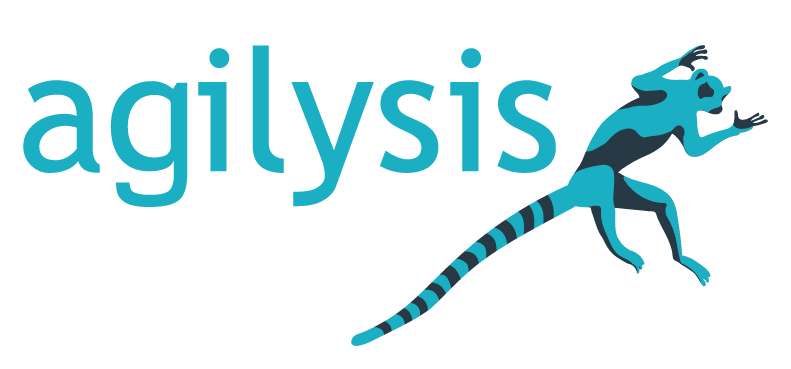Summary
The Earls Court Development Company (ECDC) has a vision to bring the wonder back to Earls Court. Their latest proposals demonstrate how Earls Court will be put back on the map, re-emerging as a destination to discover wonder, an ecosystem for creative talent and a showcase for one of the fastest growing industries in the world – clean and climate tech. The masterplan includes 4,000 new homes, 12,000 jobs, culture, community, retail, dining and leisure. 60% of the land is unbuilt, maximising open spaces and opportunities for nature to thrive. The site will have a series of cultural venues, alongside a commercial campus creating a global destination for clean and climate tech research and skills. Sustainability will be the green thread, with one of the largest zero-carbon energy loops in the UK powering the site. A hybrid planning application will be submitted this summer and the first phase will commence in 2026.
Company size
50
Industry
Property
Products used
Challenge
Understanding how current plans would impact the local market, what retail opportunities should be created and how to create a robust masterplan that would address these factors, despite London’s complex market and a high amount of local competition.
Gauging customers and audience — who is already here, what they do, what they need and where they go — in relation to other large-scale central London developments and regeneration master plans in King’s Cross and Battersea.
Prior to partnering with CACI, the company solely relied on qualitative data to understand peoples’ perceptions and inform their decision making, such as speaking to people within the community and stakeholders.
Solution
ECDC was keen to ensure that an optimised neighbourhood would be created for residents both within and outside of the development along with workers and users of the space. To achieve this, CACI interpreted and analysed raw data and numbers for the company, bringing them to life and narrating the results through comparable’s and benchmarks.
Results
Newfound understanding of the ‘size of the prize’ of wider London and tourist demographics and audiences. ECDC historically relied on gut instinct when it came to decision making, but working with CACI ensured they were backed with concrete evidence. For example, CACI’s data showed that one-third of the total potential spend in the development area could come from out of catchment.
Enhanced decision-making through evidence-based data on the community. With the development situated across both the London Borough of Hammersmith and Fulham and the Royal Borough of Kensington and Chelsea, their perceptions of the surrounding community to inform decision-making — while strong — are now rooted in evidential data. This has served to alter their perceptions to ensure that a comprehensive understanding of residents and borough dwellers can be met and their audience narrative can be shaped accordingly.
In the coming years, CACI will continue to support ECDC in the data-backed planning and construction of residential units, retail landscape and office space development.

Summary
DX is a well-established provider of a wide range of delivery services to both business and residential addresses across the UK and Ireland. First established in 1975, DX now provides one of the widest ranges of overnight delivery services in the region, as well as logistics services. To cement its market position, DX wanted to optimise operations and enhance business development capabilities around the contract bidding process.
Company size
5000
Industry
Transportation & Logistics
Products used
Challenge
DX instigated a tender with both business development and operational objectives:
Business Development
To introduce a tool to improve the contract bidding process. The solution needed to provide:
– Flexibility to model different datasets from a diverse range of existing and potential clients;
– Data-driven information to determine the most appropriate solution;
– Reliability to provide accurate overheads and costings for the business to plan;
– Speed to produce quality results within short timeframes to aid winning more business;
Operational Use
To implement the most appropriate route planning and optimisation software to bring daily efficiencies and cost savings across multiple contracts. The operational requirements were:
– Significant cost savings
– Accurate ETAs
– Flexibility to use on many different types of contract
– Usability for numerous teams of planners
Solution
CACI won the tender and implemented its market leading route optimisation solution.
Initially it was rolled out across multiple contracts, being used by different teams of planners, as well as in solution design to support and improve the business development and pricing function. DX have now been relying on CACI for over 10 years to grow their business and keep their staff and customers happy.
Results
DX uses CACI’s solution in business development to model client data for each tender, improving the process and increasing the company’s win rate.
The route optimisation solution allowed DX to establish a better-structured and more efficient route network. It also allowed them to offer timed deliveries that better suit the needs of the recipients, providing both the recipient and their primary customer with more timely and accurate delivery information.
These process improvements have introduced efficiency to operations, as well as bringing huge savings by reducing costs.


Summary
Dumfries and Galloway is responsible for the delivery of all local authority services to nearly 149,000 people living in both urban and rural areas in the southwest of Scotland.
Company size
6,000 +
Industry
Non-Profit
Products used
Challenge
Gregor Docherty is Dumfries and Galloway Council’s Economic Development Officer. He explains: “Although we have some data of our own, we don’t have the range and breadth of it to provide the information the council needs today. I was given the challenge of improving our data insight, to give us a clearer view of the areas the Council looks after and the needs of the people who live there”.
Improve data insights for a clearer view of local areas
Understand the needs of the people living in the local areas
Solution
Dumfries and Galloway Council has access to Paycheck income data for two years. Recently, the Council decided to add the Household and Wellbeing Acorn datasets to the subscription.
The addition of Household and Wellbeing insight provides a granular picture of lifestyle, income and risk factors at a local level, that allows the team to really examine areas of need and deliver value and impact from the Council’s services and programmes.
Results
Dumfries and Galloway Council successfully applied for Borderland Inclusive Growth Deal funding, using information modelled from CACI’s data.
Gregor Docherty created a Dumfries and Galloway Datazone profile, bringing together all the available information to rank the towns in the Council’s area for funding priority. The analysis revealed the four priority towns for funding, which was approved.
Learn more about Paycheck, Household Acorn and Wellbeing Acorn.


Summary
DFS, the UK’s largest sofa retailer and manufacturer, aims to lead furniture retailing in the digital age. Most famous for sofas, DFS also partners with leading lifestyle brands, such as Dwell, French Connection and Joules, to provide a wider range of furniture products.
CACI has worked with DFS for over 20 years and hosts its customer database, providing insight from CACI’s proprietary datasets to support customer understanding and location strategy. Outputs include segmentation, machine learning models, communications strategy, store catchments and digital targeting algorithms.
Company size
1,000 – 5,000
Industry
Retail
Products used
Challenge
DFS sells to a market where customers traditionally make infrequent, high value purchases. As Mike Aspinall, Data Activation Manager at DFS, explains: “The main thing we sell is sofas, with a repeat purchase average of seven years. This can be challenging for CRM, which is all about nurturing ongoing relationships“.
Our challenge was to deliver a CRM strategy that would enable us to maintain relevant engagement in a targeted way. We wanted to understand the opportunity to encourage repeat purchase through a data lens — which customers might be open to further purchases, when they might be likely to make them, and what kind of products they might want.
Maintain relevant targeted engagement
Understand the opportunity of encouraging repeat purchases
Solution
Mike asked CACI to work with their “rich customer database“, containing a large sample of DFS’ previous purchase data.
CACI analysed two years’ data to find people who had bought two items from DFS consecutively within that period, looking at their purchase patterns and pathways.
CACI mapped out the attributes of people who had made the two qualifying purchases using Ocean demographic and lifestyle data blended with DFS behavioural data. The analysis looked at the identified customers’ over and under-indexing attributes, comparing them to people who bought the first item but not the second.
CACI trained a machine learning algorithm, which is updated daily, incorporating the latest transaction and customer information. It is applied to the data in DFS’ customer experience platform (CEP), appending data points to customer profiles.
Results
Mike tells us, “We had fairly low expectations of the first email in a multi-month journey. But against the control group, we saw an 866% uplift in revenue from the email campaign alone, within 14 days. That’s a four-times conversion increase, measured against a control group of people in the same segment who didn’t receive the communication.”
This project was a perfect fit for CACI as an expert data science partner. With our DFS mission to lead furniture retailing in the digital age, machine learning is crucial to engaging our customers with truly relevant, timely communications. We have been working with CACI for decades – their team understands our business and data extremely well and we have a strong relationship.


Summary
Crisis approached CACI for support in identifying new charity store locations and analysing current store performance to support future decision making.
Company size
1000
Industry
Non-Profit
Products used
Challenge
Crisis wanted to learn from the performance of its existing stores in their different catchments, so it could identify success factors to inform future location choices. As well as understanding the characteristics that contribute to strong store performance, Juliet and her colleagues wanted to know about the halo effect – whether the shops’ presence made an impact on other donations, e-commerce, volunteering and lobbying in their local communities, and how they could maximise these positive outcomes in new store catchments.
The Crisis team approached CACI because they had heard about the Acorn categories and catchment tools and saw their potential to provide the evidence needed to develop a new retail strategy.
Analysis and learn from existing store performance
Identify success factors to inform future decision making
Understand characteristics that contribute to strong store performance
Solution
Juliet met with CACI to explain the information Crisis hoped to discover to build their retail strategy. The CACI team requested the existing store and performance metrics they needed from Crisis and proposed a list of deliverables they would generate, using Acorn demographic profiling and InSite catchment analysis overlaid on the Crisis data.
“The timings were quite tight, but the CACI consultant was quick to get back to us with a preliminary report that we could share with the senior management team to demonstrate the value of the approach. CACI followed up with a complete report and a clear explanation of the methodology used. There were spreadsheets of data and analysis by site that we could look at in granular detail. All the deliverables were well designed and easy to use – we could augment our data as more emerged, keeping the insights complete and current.”
Results
Juliet and the retail team now have the confidence to look both within and outside London for new store locations. They can work with a prioritised list that’s based on potential measured from existing store experience, catchment and customer profiling and a broader appreciation of the total opportunity for Crisis from all activities influenced by the store’s presence.


Summary
Founded with a single stall in Camden Market in 2001, Chopstix has been boxing noodles on high streets, in shopping centres and in motorway service stations for over 20 years. The brand’s mission is to excite customers with great service, great stores and most importantly, great food. With nearly 100 outlets, Chopstix aims to be the UK’s No. 1 Asian-inspired quick service noodle bar and had big plans for growth it wanted to fulfil, driven by ambitious franchisees.
Company Size
5000+
Industry
Leisure
Products Used
Challenge
Chopstix has an ambitious plan to grow through equity store development and franchising.
These plans meant they needed to understand where the best opportunities lay in the UK to successfully attract and engage potential franchisees.
A critical aspect of this needed to be the ability to objectively and dependably define and prioritise national, regional and local location opportunities for new outlets. Not just to understand where growth potential existed, but so they could provide franchisees with real clarity they would have distinct territories to operate in.
Solution
To understand Chopstix’ growth opportunities, CACI built a bespoke dashboard model using a wide range of variables to explain outlets’ relative performance and sales potential — and help them easily explain these with potential franchisees.
The model incorporates variables from CACI geodemographic data, including Acorn, Leisure Footprint, Local Footprint, and competitor location datasets, plus Chopstix’s internal financial data. The collaborative process also engaged with prospective franchisees to focus modelling on the evidence they’d want for revenue targets they’d be committing to.
The resulting PowerBI dashboard shows opportunities at national, regional, and trade zone levels on maps. All are ranked by expected turnover and growth, helping franchisees prioritise launches and achieve desired ROI. The dashboard provides detailed insights into any location, including competitors, other Chopstix outlets, visitor type mix and timings, traffic generators, and other food service brands.
In addition, the demographic information can reveal and rank delivery opportunities, identifying groups that index well for food delivery and profiles of communities where the Chopstix brand is appealing and aspirational.
Results
Sustainable growth through investment and franchising
Aaron Moore-Saxton, Franchise Director explains: “Our growth model dashboard is a differentiator in our franchising market. It gives us a common understanding with franchisees of the available opportunity. Trust and transparency are key. We don’t have to spend time arguing about targets — instead, we work together using reliable catchment and market information to make plans with lower risk and higher rewards for everyone. Franchisees can push forward with growth, with confidence, and we increase our UK market share more quickly.”
Find out more about Acorn and Location dynamics.


Summary
Using map-based data visualisation with CACI’s Geoxploit suite to give Certas Energy a clearer view of sales performance and market trends.
Company size
10,000+
Industry
Utilities
Services used
Challenge
Certas Energy, the UK’s largest fuel distributor to consumers and industry needed mapping that is in tune with the times, and they were keen to work with a partner who not only offered the software they wanted, but would also provide training and ongoing support to ensure they get the optimum benefit from their investment.
Solution
The company reports a dramatic improvement in the ability to plot and analyse sales performance and trends visually since starting to use the Geoxploit suite from digital mapping and geospatial data specialist allmapdata from CACI.
Geoxploit, a cost-effective, powerful and easy-to-use mapping analysis tool, has been created by allmapdata to give users a flying start in performing striking and meaningful location-based analysis. At its core is Geoconcept, one of the world’s most widely used geographic information systems. This is backed by a selected range of data that makes possible a variety of key analytical processes out of the box, along with a variety of pre-configured analytical processes.
Results
“Geoxploit makes it really easy to import our own data,” says Samuel Bradford. “Inevitably there were initial challenges, but a day’s training at allmapdata got us going, and since then the allmpadata team has been endlessly supportive. Nothing seems to be too much trouble for them.”
He says Geoxploit’s visualisation capability is invaluable in building internal presentations, helping both with tactical decision-making and in planning and formulating policy. Results of analysis can be colour-coded or otherwise differentiated on a map in ways that are much quicker to assimilate than columns of figures.
“For example, we can analyse the way different fuel types are selling in different parts of the country. We can plot areas where our sales volumes are changing, either looking across the whole business or focusing on different product types. We can drill right down to postcode area level to check whether sales performance is mirroring our strategy, or whether we need to modify it.”
Such has been the impact of Geoxploit’s visualisation capability, Samuel says, that it has raised the level of expectation within the company.


Summary
Business Isle of Man is an Executive Agency of the Isle of Man Government’s Department for Enterprise, acting as a key decision making and advisory body supporting the Government’s ambition for long-term economic prosperity. Its purpose is to help create an environment for key sectors to achieve sustainable growth while establishing the Island as an internationally well-regarded home for export business.
The Department has a key role to play in the achievement of the Programme for Government’s stated intention to be an Island of Enterprise and Opportunity. Supporting economic development is of strategic importance for the Island’s future growth and prosperity.
Company size
50
Industry
Non-Profit
Products used
Challenge
Business Isle of Man was approached by a property developer keen to attract larger UK multiples. These businesses were asking for a demographic report, so they could assess the commercial viability case for their brands. None of them understood the Isle of Man’s demographic.
Solution
Jonathan Platten, Economist for the Department for Enterprise:
“We commissioned CACI to develop a trusted demographic database and map that showed detailed profiles of our population across the Island. CACI impressed us with their expertise and reputation in the field of socio-demographics.”
The Isle of Man can be considered alongside the UK as part of CACI’s trusted dataset and modelling, with the same granular, visual demographic detail. For the first time, investors, retailers and businesses can build reliable modelling into their business cases at postcode level.
Results
Business Development Manager, Rachel Hopkinson expresses the benefits clearly:
“We have never before seen such a detailed analysis of our population across the island, including Douglas (the Island capital). Although our Island population is under 100,000, there is a big opportunity for retail and leisure businesses. Isle of Man retailers perform exceptionally well compared to the UK because we have a wealthy population and a captive audience. Now, we have the demographic data to show why this is the case.”
As well as commissioning CACI to produce the dataset and report, Business Isle of Man has entered into a collaborative ongoing relationship with CACI to help provide further, specific analysis for Island businesses and investors.


Summary
Trusted by families to look after their children for over 30 years, Bright Horizons is an award-winning nursery provider. The company operates over 300 community and workplace nurseries throughout the UK — each is individually designed to serve the needs of its community. Bright Horizons provides tailored childcare for corporate clients and for families, at home, at work and in local settings.
Company size
10,000+
Industry
Education
Products used
Challenge
Bright Horizons initially approached CACI for data to support their new site opening and acquisition insight programme.
Reliable data that was quick and easy to interpret for new site and location decision making was needed
Access to demographic data to support proposition development
Gain a better understanding of existing potential catchments
Solution
CACI provided Acorn demographics, profiling and mapping, giving insight into specific postcodes and communities. High-level demographic maps are instantly visible in InSite’s Locator tool.
Marketing Manager Eddie Thorogood explains: “The blend of data creates reliable and up-to-date information about the demand for our services, to support decision-making about how and where we can expand our operations so we can deliver high quality childcare where it’s needed. It also helps us improve our business model, so we can manage our portfolio and flex and balance our sites to meet changing needs.”
Results
Bright Horizons’ three pillars are ‘people, quality, growth’. Eddie explains, “We’re not about just growing for the sake of it. We always want to be where we are needed – where parents can find us and our services will be useful. With this data insight at local level, we can provide a clear picture of community and workplace need to our senior leadership team, so they can sign off new facilities.”


Summary
Bedfordshire Fire and Rescue wanted to improve their understanding of what risks and vulnerabilities were prominent in their communities in order to increase their preventative measures against them. They also wanted to begin tailoring their engagement to those most at risk to be able to create maximum impact and support.
Company size
1,000
Industry
Non-Profit
Products used
Challenge
Improve understanding of current and emerging community risk
Identification of households most likely to have a fire
Ensure preventative approach is risk-based and efficient
Solution
The ability to utilise the social and demographic insights accessed via CACI’s Acorn to enhance the understanding of risk and vulnerability within Bedfordshire, while also tailoring engagement to maximise the impact on those most at risk. Our data-driven methodology ensures resources are targeted effectively and efficiently.
Results
Using the data Acorn provides, Bedfordshire Fire & Rescue are now able to target those most in need of help, while making sure their approach is based on risk and also person-centred. The data provides the opportunity to understand the different needs of the communities they serves and assurance that the approach now being take is efficient, yet effective.


Summary
Away Resorts is a holiday park operator specialising in holiday homes, luxury lodges, caravans, and home lettings and ownership across the UK. Having grown recently from six parks to 27 after a substantial acquisition, the business hypothesised that there may be new customer groups across their wider portfolio of sites. This presented the team with an opportunity to decipher these customers’ demographics and continue to grow the business through engaging and relevant communications.
Company size
1,000 – 5,000
Industry
Leisure, Arts & Entertainment
Products used
Challenge
Laura Miller, Head of Marketing at Away Resorts, highlighted three major challenges that Away Resorts needed to overcome to find out what their customers wanted to get out of their holidays and where the optimal locations for the acquisition of future parks would be:
Reassess how to enhance the efficiency and effectiveness of their marketing spend.
Develop a future capital programme that would be backed by a genuine understanding of what customers want from their bookings, their desires when looking for a holiday park, and which amenities to prioritise investing in.
Attract the right customer demographic by refreshing existing marketing communications and channels.
Result
These insights helped Away Resorts gauge where marketing spend should be focused to target specific segments, how best to distribute campaign spending and how to switch strategic gears to deliver more effectively executed campaigns, including the introduction of new media channels. Plus, it has been particularly beneficial during executive board meetings, where tangible, easily comprehensible customer insights can now be shared with the wider business to bolster decision-making.
This deep dive into customers has enabled Away Resorts to adapt their customer feedback survey on holiday motivations and needs to be met by including questions on customers’ specific interests. The business has confidently leaned into an ‘exploration’ narrative based on the findings, which suggested that their target segment wants to explore beyond the park — partaking in walks, bike rides and other activities.


Summary
Agilysis is a transport safety consultancy specialising in road safety. They have a wealth of experience working with road safety, and a company-wide mission of using data to inform road safety interventions and prevention strategies for casualty reduction and overall road awareness. One of their key requirements is the ability to supply insights to road safety stakeholders about individuals involved in or exposed to different types of road risk in various local communities.
Company size
50
Industry
Non-Profit
Products used
Challenge
Agilysis had been using another socio-demographic profiling tool to convey the necessary demographic profiling insights for over a decade. However, as time progressed, two critical issues arose:
The tool’s provider wouldn’t allow Agilysis to view their socio-demographic profiling model at a low enough geographic level to make it as useful as needed.
Agilysis was unable to expose all the available variables to their stakeholders due to license holder restrictions. This particularly affected their road safety stakeholders who generally work for local authorities and police forces.
Solution
Agilysis began using CACI’s geodemographic segmentation, Acorn, to enhance the calibre of their road safety intervention design and deliver precise, robust results to stakeholders.
The business dissected the available list of all the metrics, identifying those which felt most useful, easiest and relevant to understand and apply to the individual forces policing strategy. By leveraging these insights, Agilysis can better understand the likely propensity of an individual Acorn type to partake in various acts of travel, walking and cycling, a key priority of many road safety stakeholders nowadays.
Results
Acorn’s wide range of variables and its ability to let Agilysis transparently share sociodemographic metrics and results with stakeholders has helped the business make the information as useful as possible to augment the design of road safety interventions, and provide police forces, highway authorities and other stakeholders with valuable data. This intelligence leads to improved strategic and decision-making.
Additional CACI datasets are likely for Agilysis’ future, with the business having already assessed datasets that can further enhance transport safety projects. These should provide new insights into key metrics such as collision-involved drivers from outside Britain and road danger for deprived and minority communities.


Summary
Age UK offer free information and advice on topics as diverse as claiming benefits to finding a care home. With a growing ageing population, they play an integral part in helping many of our older generation with their struggles to live comfortably.
Company Size
1,000 – 5,000
Industry
Non-Profit
Products used
Challenge
Age UK came to us for help with the following challenges.
Need to be able to track ROI against campaigns
Create a dashboard that allows different departments to see the customer profiles
Solution
CACI’s suite of demographic data helps the charity build a deeper understanding of its diverse supporter and customer base; whether they be a donor to the cause, an event participant, product purchaser, or any other relationship holder.
Results
CACI’s suite of demographic data (Acorn, Fresco and Wellbeing Acorn) allows Age UK to be smarter in its communications strategy. Having a deeper understanding of its customer base, Age UK can be more considered when planning whom to contact with specific offers that are best suited to each of its customer segments.


Summary
Affinity Water is the largest water-only supplier in the UK, committed to delivering a high-quality water service to all their customers. Their vision is to be the UK’s leading community-focused water company, providing 950 million litres of water each day to over 78,000 non-household connections and 1.4 million homes.
Company size
1,000 – 5,000
Industry
Utilities
Products used
Challenge
Affinity Water had the following challenges when approaching us.
Insight into how and why different groups have different patterns of water usage was needed
An easy-to-use platform and the ability to apply to Affinity Water’s own customer base was crucial
Communications then needed to be tailored based on the insights taken from postcode level data
Solution
Affinity Water uses Acorn’s powerful geodemographic segmentation capabilities to model the demand for water in unmetered households.
Acorn is combined into Affinity Water’s models to allow for a more nuanced understanding of different household’s demand for water. This understanding enables Affinity to identify local irregularities to quickly identify and respond to leaks ensuring targets for water use reduction are met.
Results
Using Acorn has enabled Affinity Water to understand how different households’ demand for water changes on an hourly basis. This has helped them design water saving programmes by understanding how different groups would react to water saving programmes, as well as being a factor in re-designing their bills.
Additionally, Affinity have also been able to model the increase in demand due to COVID-19 so they can engage with regulators about increased water usage.



































































